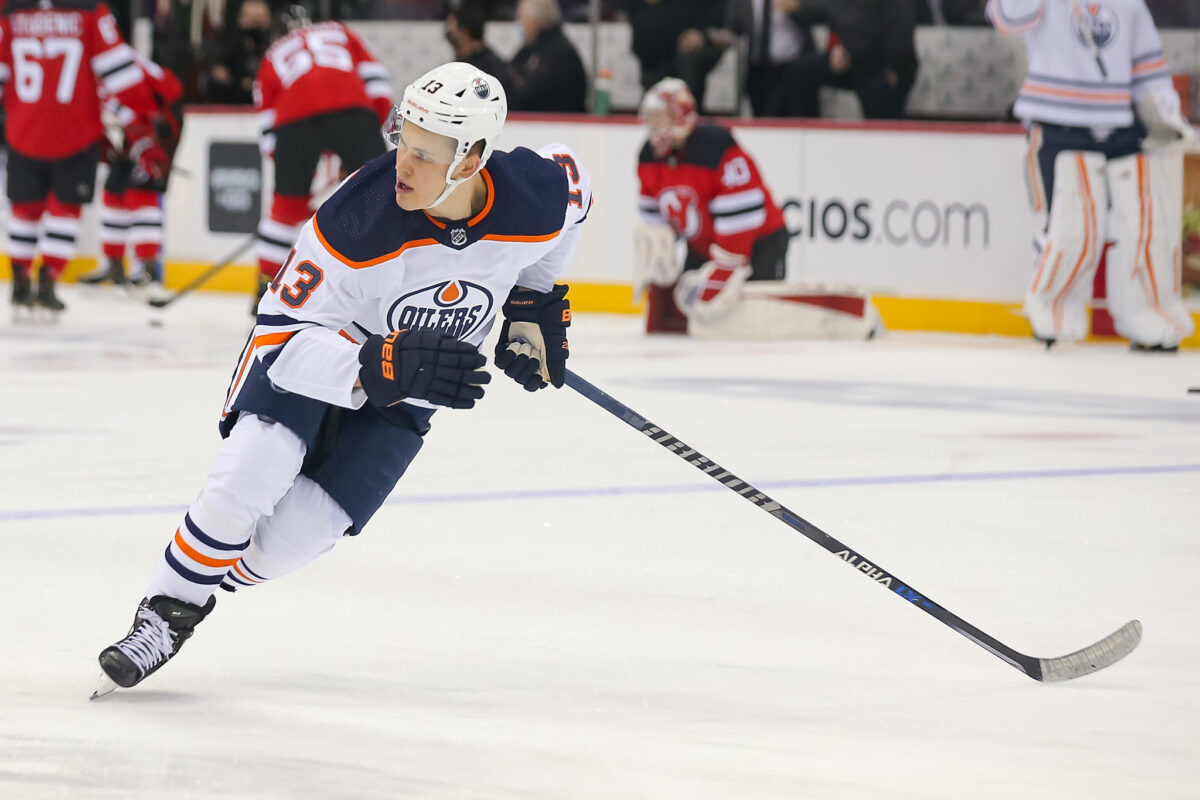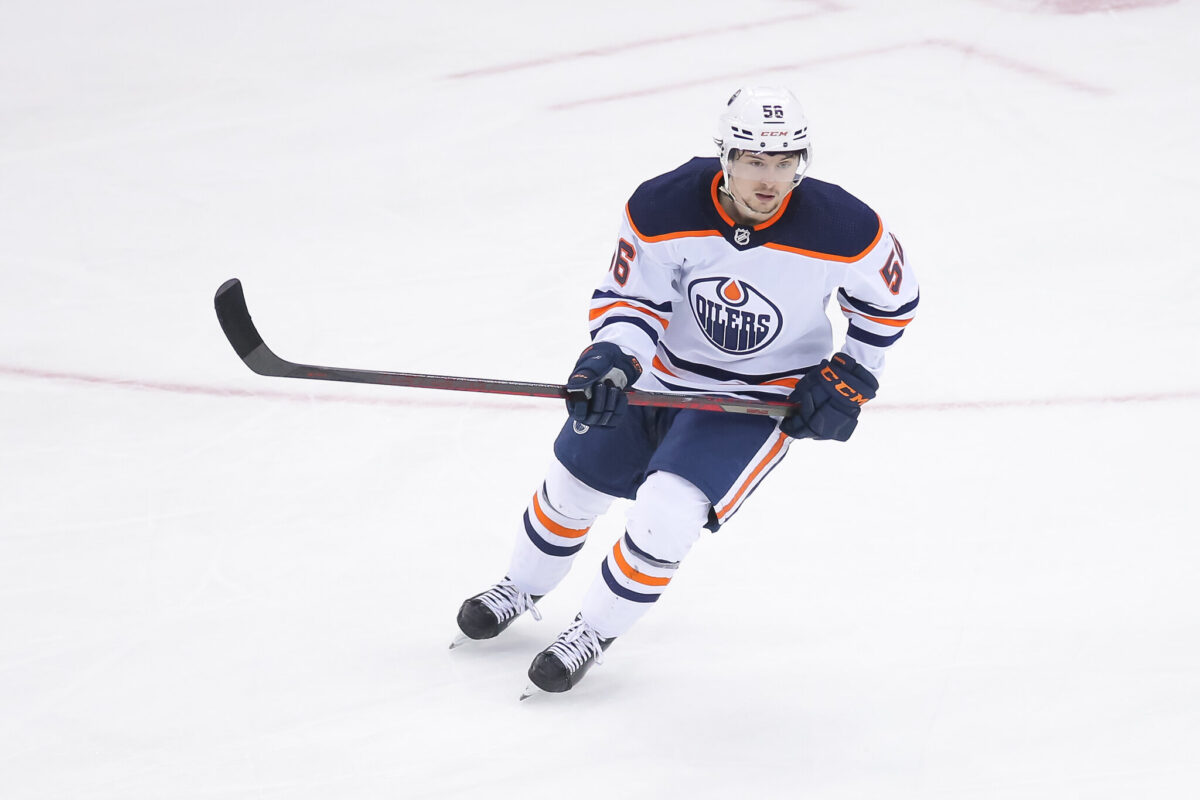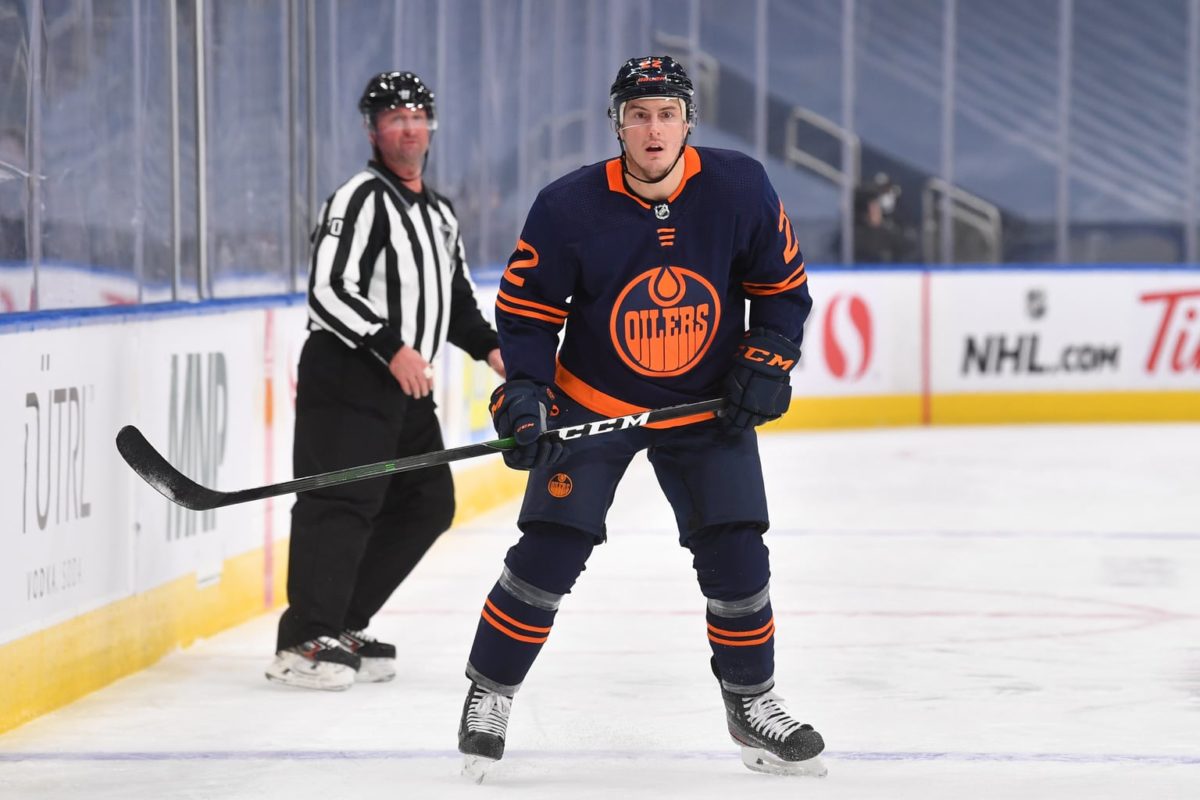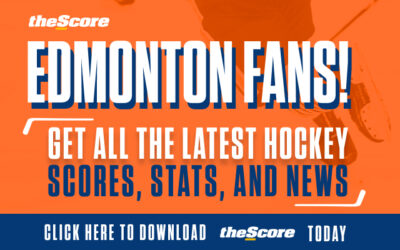The Edmonton Oilers have three restricted free agents (RFA) on the NHL roster that could be a target of offer sheets this summer in Kailer Yamamoto, Jesse Puljujarvi, and Ryan McLeod. Other RFAs include Tyler Benson, Brendan Perlini, Filip Berglund, and Ostap Safin; if any team decides they want to take a chance on them, the Oilers wouldn’t be too worried about losing them.
Oilers’ Lack of Cap Space Makes RFAs Prime Targets
The Oilers were projected to have just over $7 million in cap space for next season before Ken Holland said it’s unlikely that Oscar Klefbom plays next season. The team has a number of free agents, not only the RFAs, that they are wanting to bring back, including Evander Kane and Brett Kulak, and have a projected roster of 15 players (eight forwards, six defensemen, one goalie) right now.
All three of the Oilers’ RFAs that are playing in the NHL will require raises and could be prime targets for offer sheets. A team may be willing to take a chance and offer Puljujarvi a long-term contract before he breaks out like Valeri Nichushkin has for the Colorado Avalanche. The Oilers need to find themselves some homegrown talent and sign them to good deals before they break out and require a bigger payday like Zach Hyman (“From free agents to salary cap, Oilers face an offseason puzzle”, NBC Sports, June 8, 2022).

Puljujarvi’s analytics are very good and he led the Oilers in goals against per 60, but oftentimes he is frustrating with the lack of finish on most nights despite his effort and great positioning. He would be the player I’d watch out for the most if an offer sheet would be headed the Oilers’ way, as he may see a better opportunity to play somewhere else with Yamamoto passing him on the depth charts late last season and his minutes cut big time in the playoffs.
As for Yamamoto, he is on the rise and the Oilers should lock him up long-term before he too breaks out even more. He would be the top priority among the RFAs as his $1.175 million will likely double at the very least, depending on the term. The money the Oilers will have to pay for these players is going to start adding up, and if they can’t come to an agreement soon with one or more of them, teams with lots of cap space can offer a contract that may just be out of the Oilers’ price range.
Related: Oilers’ Free Agent Free-For-All — Predicting Holland’s Moves
McLeod is the other player that could be offer sheeted, but it is the least likely. Puljujarvi and Yamamoto both got bridge deals for one to two seasons at $1.175 average annual value (AAV), which fell under the basement for a team to send compensation back. It wouldn’t make much sense and a team sending an offer sheet at a RFA with that low of a cap hit would just be helping out their opponents rather than actually trying to get the player. McLeod may get the same sort of bridge deal that the other two got the past couple of years to see if he continues progressing and earns a larger payday. An offer sheet of that little value would only help the Oilers in taking one less thing off their plate. As I said, it would be of little use if a team sends an offer sheet the Oilers’ way for him, but you never know.
Compensation the Oilers Would Receive if a Player Signs
The lowest AAV requiring the need for a draft pick to change hands was raised from last season to $1,386,490. In the case of McLeod and the other RFAs that were playing in the American Hockey League (AHL), it’s not worth a draft pick in return, but aren’t breaking the bank either, so the Oilers wouldn’t be able to match the value.

As for Yamamoto and Puljujarvi, I could see them falling into one of two tiers. The lower one requires an AAV of between $2,100,742 and $4,201,488 where the team receiving the player would receive a second-round pick in return while the range above between $4,201,488 and $6,302,230 requires a return of a first-round pick and a third-round pick.
The more likely scenario if the team sending the offer sheet actually wants the player is to offer in the range of $4,201,488 and $6,302,230, so that it is even more difficult for the Oilers to match it. Both Yamamoto and Puljujarvi were first-round picks and would provide immediate help to a team rather than the years the first-round pick would need to become impactful in the NHL.
The Oilers are in win-now mode and can’t afford to lose either of them just for a future draft pick with what they have and should continue to provide the team. The hope is that the Oilers can sign both to deals before free agency opens and it is lower than the higher tier for a significant number of years.
Trades & Luck Could Really Benefit the Oilers
As the Oilers are in dire need of as much cap space as they can get, there are definitely options ahead of them, but Holland has a lot of work to do. Top trade candidates that make sense include Tyson Barrie ($4.5 million x two years), Zack Kassian ($3.2 million x two years), and Warren Foegele ($2.75 million x two years).

Barrie is now a luxury that specializes on the power play and plays less than 20 minutes a night on the Oilers on the third pairing. With the arrival and impact of Evan Bouchard, Barrie will garner trade interest and a solid return. Kassian also costs too much for the Oilers to be playing fourth-line minutes and only showing up half the time. His physicality will be something teams desire, especially if they’ve been pushed around last season (look at New York Rangers and Ryan Reaves). As for Foegele, he played bottom-six minutes all season and struggled throughout, even being scratched at times in the playoffs. All three are good possibilities to move with the prospects who are knocking at the door able to fill roles.
The Oilers may also get lucky with potential retirements of Duncan Keith and Mike Smith, but I would count on a Smith retirement way more than Keith. PuckPedia stated that the Oilers would not carry a cap hit due to the changed rules in 2020 and him having a 35-plus contract. That would free up $2.5 million in cap space that Smith would have been paid in total. The Oilers should be already looking at options in net as they need a legitimate No. 1 goaltender for next season and Holland already said the team doesn’t have one.
Offer sheets aren’t the most common thing, but there have been a couple over the past few years. Some teams could really like a player and shoot their shot, especially if the other team has cap trouble. It is something to watch for as we approach free agency.
